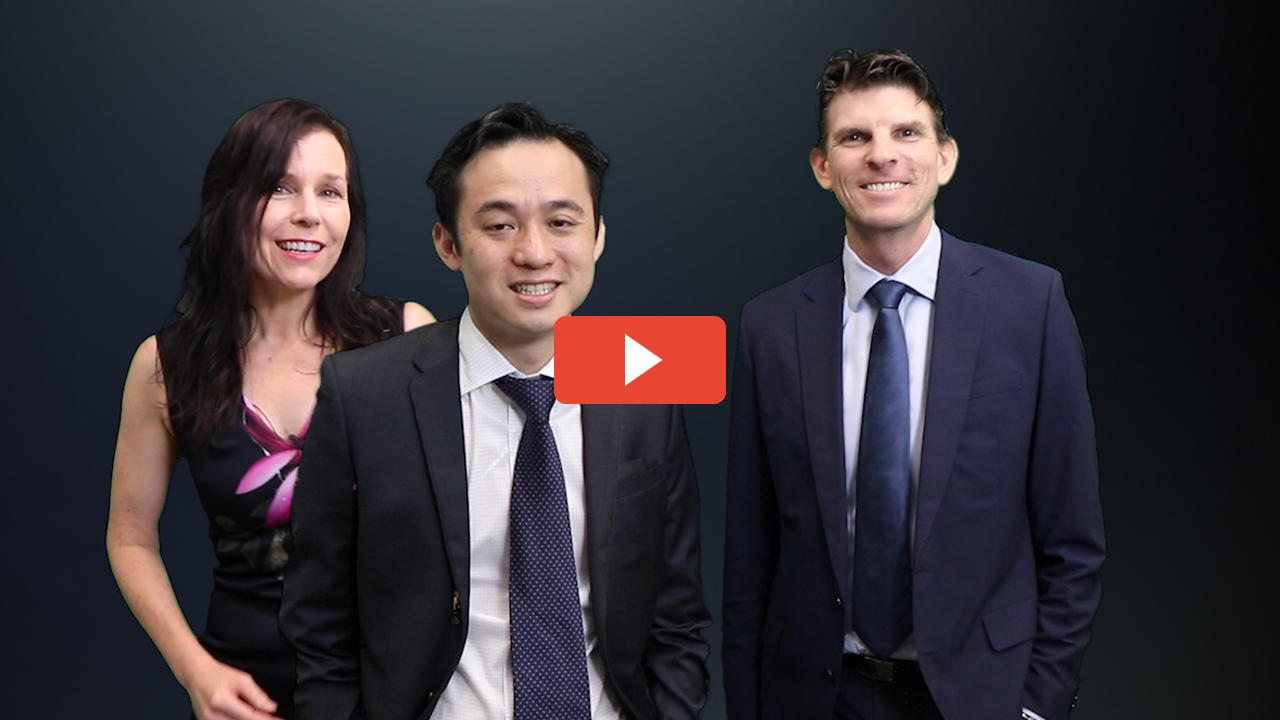August 2025 Round Up | Don’t Let Backdated Trust Resolutions Cost You
This month, the ATO reminds tax practitioners about some situations when they need to apportion interest deductions for rental properties. The ATO is also reminding taxpayers to be careful with the main residence exemption and ensure that CGT events are disclosed correctly in the tax return, even if an exemption is available.
We also take a look at the Goldenville Family Trust case, which highlights why it’s essential for trustees to make distribution decisions by the relevant deadline and ensure that there is appropriate evidence of this taking place. The Tribunal also looked at the substance of certain types of income over its form, with timing, evidence, and documentation all playing a key role in the outcome.
Change is a constant for the profession. The Knowledge Shop membership can help you and your team keep ahead of change with an advisers' help desk, workpaper knowledge base, quarterly PD, and more - wherever you are and however you are working. Book in a time for a tour or call the Knowledge Shop team on 1300 378 950.
Inside this month, Ann Dai (Tax Adviser) and Amy Yan (Associate Tax Director) bring you:
Denying deductions for ATO interests
The ATO has issued a detailed fact sheet which provides guidance on the practical implications of recent changes to the tax legislation that deny deductions for general interest charge (GIC) and shortfall interest charge (SIC) from 1 July 2025.
The ATO clarifies that for most taxpayers, the changes basically prevent GIC or SIC from being deductible to the extent that the interest is incurred on or after 1 July 2025. GIC and SIC incurred before this date can still be deducted.
The key issue in many cases will be confirming when the GIC or SIC amounts have been incurred, which is based on when there is a presently existing liability to pay the amount. The ATO notes that the approach is a bit different depending on what the interest charge relates to, the nature of the interest charge and the circumstances in which it arose.
For example, when it comes to unpaid income tax debts, GIC isn’t incurred until a notice of assessment is served. If the ATO amends an assessment, the due date for payment is 21 days after the amended assessment is given, and GIC would only be incurred after this due date has passed.
SIC imposed on certain tax shortfalls is normally incurred on the same day the notice of assessment is given, even though the SIC might be calculated for a past period.
The fact sheet provides a range of examples as well as guidance on taxpayers with substituted accounting periods and how to deal with remission of GIC or SIC amounts.
The ATO also provides some guidance on when a taxpayer might be able to claim a deduction for interest on borrowings that are used to pay tax liabilities. This is normally only possible where the taxpayer carries on a business in their own right and the tax liability relates to that business activity.
Apportioning rental interest expenses
The ATO has issued website guidance for clients taking out mortgages for rental properties and when it is necessary to apportion expenses.
Apportionment of interest expenses is generally required where:
- Your clients co-own a property, unless a 'separate legally enforceable written agreement' is in place
- They increase their rental property mortgage for private purposes
- They use the property for private purposes
- The property is only rented out for part of the year.
Where clients co-own a property, this normally means they can only claim expenses in proportion to their ownership interest. Joint tenants each hold an equal interest in the property, while tenants in common may hold unequal interests (e.g. 20%, 80%).
The tax position can become more complex in cases where lenders require that a client signs on another person (e.g. their spouse) on their loan for borrowing purposes. If that person has no other association with the rental property, your client could make a separate legally enforceable written agreement witnessed by a justice of the peace. The agreement could state your client is 100% liable for the loan repayments, interest and expenses.
If part of the loan has been used for private purposes then interest accruing on this portion of the loan is not deductible. It is important to check if clients have included private items in their rental property loan, or refinanced or drawn down on their rental property loan for private purposes. Once a loan has been used for a private purpose, there is then an ongoing need to apportion interest for the life of the loan, except in very limited circumstances.
Your clients can't claim a deduction for interest expenses for periods the property is used for private purposes, even if it's a short period of time.
Where clients have sold their property part-way through a year, or changed its purpose, then the interest on the mortgage must be apportioned according to the period the property was rented out.
Tips to get the main residence exemption right
The ATO has noticed some recurring problems with the non-reporting of capital gains (or losses) and applying the main residence exemption when properties are sold. The ATO’s key tips in this area are as follows:
- Ask clients if they have bought or disposed of property in the past income year. If they have bought property, check if they're using the property solely as their primary place of residence, earning income from it (rental or business), or if it's vacant land.
- Help clients understand record keeping requirements.
- Use the 'Property transfer' information in pre-fill reports, which is available in Online services. Transfer information includes:
- Property address
- Contract date
- Settlement date
- Sale price.
- Check if clients disposed of vacant land. If they disposed of vacant land, they're not normally eligible for the main residence exemption, even if they intended to build their main residence on it.
- Check eligibility to use the 6-year absence rule. This rule can only be used if the property was your client's main residence before they rented it out. If clients choose to use this rule, make the election in their tax return by including the main residence exemption in the CGT section.
- There can only be one property as a main residence at a time.
- Ask clients if they owned more than one property during any of the ownership period of the property they sold.
- The only exception is the 6-month period when they move from one home to another.
- Check if tax residency status of clients has changed while owning the property.
- Include the full or partial main residence exemption in client tax returns:
- Under the question Capital gains tax exemption, rollover or additional discount type code, select I: Main residence exemption (Subdivision 118-B) from the drop-down list.
Trust resolutions for distributions not valid
In a case which focused on the treatment of trust income, the ART has held that certain distributions from the Goldenville Family Trust (GFT) were not valid and therefore the default beneficiaries should be taxed on the net taxable income of the trust for the relevant years.
In the 2015, 2016 and 2017 income years, the GFT, by written resolution, distributed interest income to two beneficiaries of the trust, including a foreign resident, with the apparent aim of achieving a more favourable tax outcome. Interest income distributed to a non-resident beneficiary will normally be subject to a flat 10% withholding tax. However, the Commissioner disputed the tax treatment, arguing that the resolutions weren’t valid and that the income should not be classified as interest.
The Tribunal’s first key finding was that the trust resolutions were invalid. For a trust distribution to be effective for tax purposes, the resolution must record a trustee decision that was made before 30 June of the relevant income year. The ART wasn’t convinced that the trustee had made the relevant decisions by 30 June. If anything, the evidence tended to suggest that the decisions were probably made after the end of the relevant year.
As the resolutions weren’t valid, some default beneficiaries became entitled to the income. These beneficiaries were residents of Australia.
The Tribunal then considered whether, even if the resolutions were valid, the income derived by the trust could be properly characterised as interest income. While the Tribunal accepted that the amounts were in the nature of income and should be included in assessable income, there wasn’t sufficient evidence to prove that the amounts represented interest. Without reliable supporting material, the Tribunal rejected the trustee’s characterisation of the income.
This case highlights two important issues for accountants and advisers. First, trust resolution decisions must be made before 30 June each year in order to have the intended outcome for tax purposes. While formal documents can potentially be prepared after year-end, these should only be used to record decisions that were made before year-end. Preparing contemporaneous documentation to prove that the decision was made before year-end becomes crucial. Any attempt to backdate decisions or documents is likely to fail. Also, informal or incomplete resolutions or documents significantly increase the level of risk associated with the arrangement.
Second, the label used to describe items of income isn’t necessarily conclusive in determining the tax outcome. The ATO and courts will typically take a substance of form approach when it comes to determining the nature of income, especially where the characterisation can have a material impact on the tax outcome.
Share this
You May Also Like
These Related Stories

May 2025 Round Up | Year-end trust distributions and succession planning tax risks

Feb 2022 Tax Round Up - The ATOs attack on trust and trust distributions


No Comments Yet
Let us know what you think